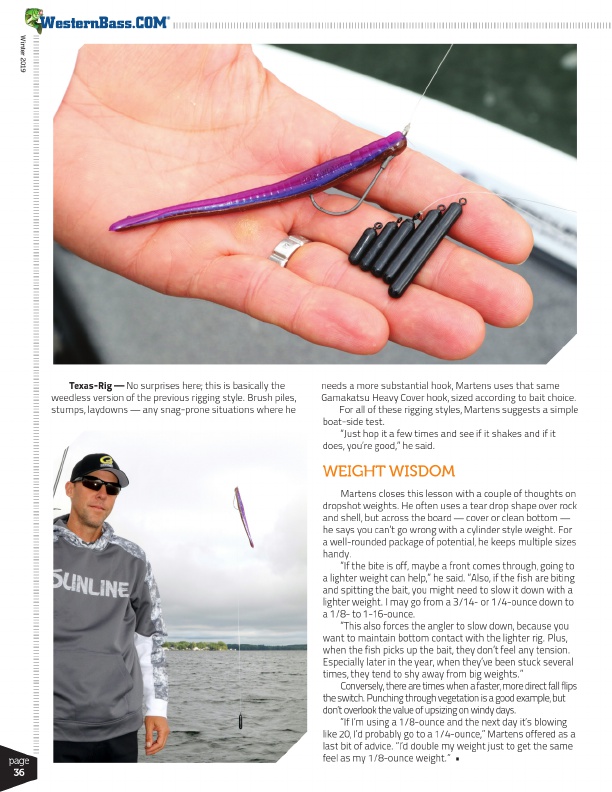
®
Winter 2019
Texas-Rig — No surprises here; this is basically the weedless version of the previous rigging style. Brush piles, stumps, laydowns — any snag-prone situations where he
page
36
needs a more substantial hook, Martens uses that same Gamakatsu Heavy Cover hook, sized according to bait choice.
For all of these rigging styles, Martens suggests a simple boat-side test.
“Just hop it a few times and see if it shakes and if it does, you’re good,” he said.
WEIGHT WISDOM
Martens closes this lesson with a couple of thoughts on dropshot weights. He often uses a tear drop shape over rock and shell, but across the board — cover or clean bottom — he says you can’t go wrong with a cylinder style weight. For a well-rounded package of potential, he keeps multiple sizes handy.
“If the bite is off, maybe a front comes through, going to a lighter weight can help,” he said. “Also, if the fish are biting and spitting the bait, you might need to slow it down with a lighter weight. I may go from a 3/14- or 1/4-ounce down to a 1/8- to 1-16-ounce.
“This also forces the angler to slow down, because you want to maintain bottom contact with the lighter rig. Plus, when the fish picks up the bait, they don’t feel any tension. Especially later in the year, when they’ve been stuck several times, they tend to shy away from big weights.”
Conversely, there are times when a faster, more direct fall flips the switch. Punching through vegetation is a good example, but don’t overlook the value of upsizing on windy days.
“If I’m using a 1/8-ounce and the next day it’s blowing like 20, I’d probably go to a 1/4-ounce,” Martens offered as a last bit of advice. “I’d double my weight just to get the same feel as my 1/8-ounce weight.” •